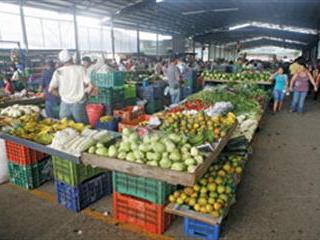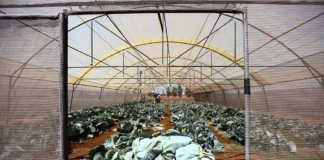
A 400ha farm 15 minutes from Malmesbury has some of the country’s prime agricultural land and is owned by a highly competent, fourth generation farmer. Yet things are collapsing. The farmer is sending his only son away to work on a farm in the US, and leasing his land to one of his neighbours who can afford to plant it in light of the forecast grain prices. If this seasoned farmer can’t succeeed, what hope is there for farming in South Africa, never mind government’s plans to establish a new cadre of emerging farmers on redistributed land?
This particular story may be playing out on a wheat farm belonging to a white farmer in South Africa, but the same thing is happening in the US, South Korea and many other countries. Over the past half-century the number of farming units in the US has dropped by two-thirds, while the average farm size has tripled. Farmer’s Weekly readers, meanwhile, will be all too familiar with the rate at which the number of commercial farmers in SA continues to drop as farm sizes increase.
According to Stats SA, as a direct result of the agglomeration of farms, the total number of commercial farming units in the Western Cape dropped by 7%, from 7 185 in 2002, to 6 682 in 2007. Employment figures on large farms for the same period showed a 13,5% decline, from 219 091 full-time and part-time employees in 2002 to 189 489 in 2007. That’s 29 000 jobs we can ill afford to lose, gone in just five years, largely in the name of forcing agricultural efficiency through increasing economies of scale.
Unsustainable
The pervasive economic rationale for this is that these losses were regrettable, but necessary to ensure we retain at least some agricultural jobs by staying internationally competitive. It is true that economic competition and innovation are critical. Yet the current strategy of increasing economies of scale along our food value chain is fundamentally contradictory to the basic principles of competition and innovation.
By continually reducing the number of players throughout the value chain we’re creating highly monopolistic structures within our food system that lack the diversity required to be truly innovative. As the playing field between producers, retailers and consumers is currently laid out, increasing economies of scale may appear, in some cases, to be delivering better prices to the consumer. Any system where jobs are beign shed in order to reduce the price of a shelf item is fundamentally unsustainable.
What society saves at the checkout desk it invariably pays for in other, less obvious ways. The most common point of focus in any discussion about combating consolidation tends to be the role the state plays in setting import tariffs and trade barriers.
However, industry observers such as the National Agricultural Marketing Committee (NAMC) highlight the very problematic nature of retail consolidation, stating that the “situation is worsening for small farmers as the markets slowly consolidate in favour of privately run supermarkets.”
And that the government must take measures “to protect the small farmers from the impending disaster.” In the seven years since the release of this report in 2005, the steady process of consolidation has continued across every level of the food value chain and the NAMC has subsequently released a number of well-researched reports effectively reiterating this warning.
Safeguards
Given that the problem appears to be clearly understood, the question is: how do we do it? How can government and the farming community protect small farmers from obsolescence? Firstly, it’s useful to consider the safeguards put in place by a number of other emerging economies facing the same challenge. A notable example of this is the maintenance and support for localised market systems which operate parallel to centralised retail chains.
Costa Rica example
Given the prominent role localised markets play in many South American countries, it was encouraging to follow the SA agricultural delegation’s recent visit to Costa Rica, where local fresh produce markets remain a prominent link between family farmers and urban consumers. In Costa Rica, as in other Latin American countries such as Peru and Bolivia, vibrant local markets backed by the state, grant local producers direct and regulated access to their target markets – a system which benefits producers and consumers alike.
These are spaces which promote competition, while helping to ensure that the profits from local food systems are shared in the community. It’s important to note that we’re not talking about unhygienic informal stalls stocked with wilting greens and over-ripe tomatoes. With between 20 and 200 registered retailers operating under a single roof, competition for customers is high. Traders know that anyone touting sub-standard produce without adjusting the price accordingly is quickly left by the wayside.
Unlike large retail chains, which excel in their ability to create captive markets for a wide range of over-priced goods through the strategic use of loss-leaders, localised fresh produce markets offer consumers almost instantaneous price and quality comparison. This system is a textbook example of perfect competition that benefits the consumer. And because the families responsible for producing the goods are the ones negotiating with customers, the farming community is also safeguarded against unreasonable exploitation by intermediaries.
Furthermore, what local markets lack in terms of scale-driven price competitiveness, they make up for in other ways. One way is the fact that these inexpensive facilities only operate for the five to 10 hours per week that are required to ensure that local communities are stocked up with their basic needs (for the rest of the week these venues are available to fulfil other public needs). Taking this into account it’s unsurprising that, in Costa Rica, local markets tend to deliver farm produce in greater abundance and at equal prices to the local Walmart brands.
Parallel
International markets and retail chains have a role to play in our globalised food system. Coffee and beef are major export earners for Costa Rica and most farmers will produce at least one of the two for the international market as part of their income stream. What the local town markets such as those found across Costa Rica demonstrate is that, with state support through infrastructure and regulation, it’s possible to establish parallel systems through which local farming families may choose to bypass monopolistic retail structures.
They also demonstrate that, in practice, these systems are able to support smaller farmers while supplying a wide range of high quality produce ranging from fruit and vegetables, to dairy and processed goods at prices that compete with regional Walmart subsidiaries. The key difference is that local markets excel at decentralising power and profit.
For struggling farmers in South Africa, where farm size and retailer compliance are currently insurmountable barriers to success, the alternative offered by localised markets could make all the difference. This difference could have a profound knock-on effect for the tens of thousands of farm workers who will otherwise lose their jobs over the next decade as farm numbers continue to dwindle.
Luke Metelerkamp is a food systems researcher at the Sustainability Institute in Stellenbosch. Contact him at [email protected]
Sources: Louw A, Geyser M, Madevu & Ndanga L. 2005, Global Trends in Fresh Produce Markets, National Agricultural Marketing Committee; Statistics South Africa; Survey of Large Scale Agriculture 2002, Pretoria: Statistics South Africa
Census of Commercial Agriculture 2007 (Preliminary), Pretoria: Statistics South Africa.













